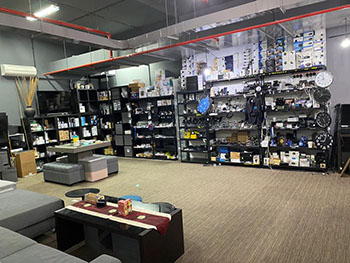Body-worn cameras (BWCs) are small, portable devices that can be attached to a person’s clothing or worn on their body. They are equipped with a camera and a microphone, and are designed to record audio and video footage of interactions between law enforcement officers and the public.
In Singapore, the use of BWCs by law enforcement agencies is governed by the Police Force Act and the Public Order Act. These laws set out the circumstances under which BWCs may be used, as well as the rules and procedures for the collection, retention, and use of the footage they capture.
BWCs are used by law enforcement agencies in Singapore as a tool to enhance transparency, accountability, and public trust. They can help to provide an objective record of interactions between officers and the public, and can be used as evidence in criminal and disciplinary proceedings.
However, the use of BWCs also raises privacy concerns, as they have the potential to capture sensitive personal information. In order to address these concerns, the laws governing the use of BWCs in Singapore include provisions to protect the privacy of individuals whose interactions are recorded. For example, the Police Force Act requires that officers inform individuals when they are being recorded, and that the footage be deleted after a certain period of time unless it is needed for an investigation or other legal proceedings.
Body Worn Cameras – Facial Recognition
It is possible that some body-worn cameras (BWCs) may incorporate facial recognition technology in the future. Facial recognition technology involves the use of algorithms and software to identify and match faces in images or video footage. It has the potential to be used for a variety of purposes, including identifying individuals who are wanted by law enforcement, verifying the identity of individuals for security purposes, and automating tasks such as tagging and organizing photos.
However, the use of facial recognition technology in BWCs raises a number of ethical and privacy concerns. Some of the concerns that have been raised include:
Accuracy: There is a risk that facial recognition technology may produce false positives or false negatives, which could lead to individuals being wrongly identified or misidentified.
Bias: Some studies have found that facial recognition technology can be biased against certain groups, such as people of color, women, and younger people.
Privacy: The use of facial recognition technology in BWCs could potentially allow law enforcement agencies to collect and store large amounts of personal data on individuals, raising concerns about privacy and the potential for abuse of this information.
In light of these concerns, it is important that any use of facial recognition technology in BWCs be carefully evaluated and regulated in order to ensure that it is used in a responsible and ethical manner.
Future of Body-Worn Cameras for Law Enforcement
Body-worn cameras (BWCs) have become increasingly popular in recent years as a tool for enhancing transparency, accountability, and public trust in law enforcement. BWCs are small, portable devices that can be worn by law enforcement officers to record audio and video footage of their interactions with the public. They can provide an objective record of these interactions, which can be used as evidence in criminal and disciplinary proceedings, and can help to promote accountability and transparency in law enforcement.
As technology continues to advance, it is likely that the capabilities and features of BWCs will also continue to evolve. Some potential developments that may be seen in the future include:
Improved video and audio quality: BWCs may continue to become more sophisticated, with higher resolution video and clearer audio recording.
Enhanced storage and transfer capabilities: BWCs may be able to store and transfer recorded footage more efficiently, allowing for easier access and management of the data.
Integration with other technologies: BWCs may be integrated with other technologies, such as facial recognition or artificial intelligence, to enhance their capabilities and facilitate more efficient and effective use.
However, the use of BWCs also raises a number of ethical and privacy concerns, and it will be important for law enforcement agencies to carefully consider these issues as the technology continues to evolve.
Body Worn Camera and Artificial Intelligence (AI)
It is possible for body-worn cameras (BWCs) to be integrated with artificial intelligence (AI) technology in order to enhance their capabilities and facilitate more efficient and effective use. Some potential applications of AI in BWCs include:
Facial recognition: BWCs equipped with facial recognition technology could potentially identify individuals who are wanted by law enforcement, verify the identity of individuals for security purposes, or automatically tag and organize footage for easier management and analysis.
Automatic redaction: BWCs equipped with AI could potentially be used to automatically redact sensitive personal information, such as the faces of bystanders or minors, from recorded footage before it is released to the public.
Analysis and categorization: AI could be used to automatically analyze and categorize recorded footage, allowing for more efficient and effective review and management of the data.
However, the use of AI in BWCs also raises a number of ethical and privacy concerns. For example, there is a risk that AI may produce false positives or false negatives, which could lead to individuals being wrongly identified or misidentified. There is also a risk that AI may be biased against certain groups, such as people of color, women, or younger people. It is important for law enforcement agencies to carefully consider these issues and ensure that any use of AI in BWCs is responsible and ethical.


